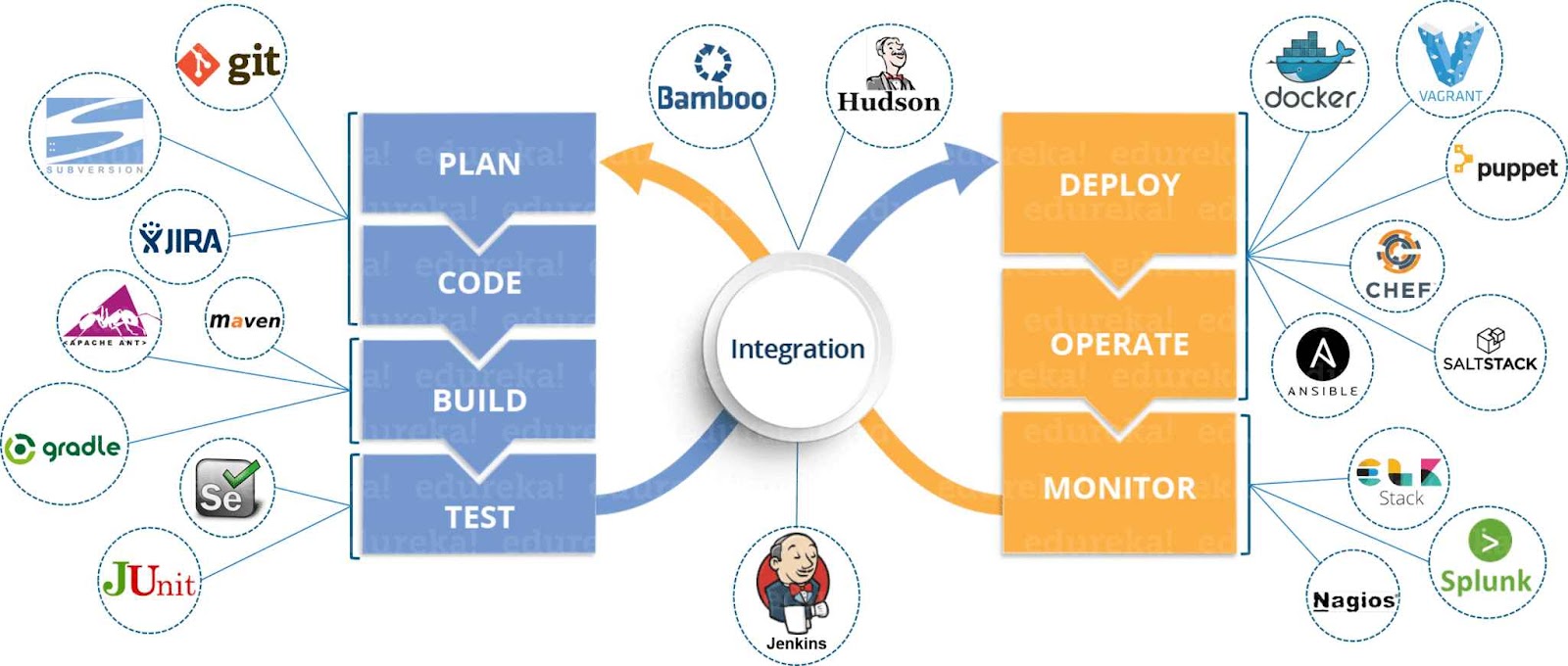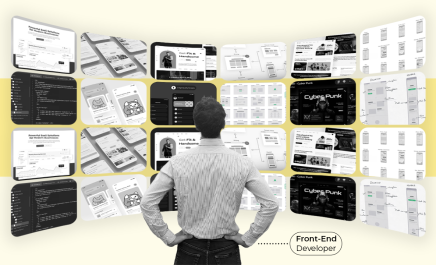5 Skills Your Java Full-stack Developer Must Have in 2023
- Siften Halwai
- July 14, 2023
- 6 Minute Read

Java as a programming language, has always been popular and robust. And the reason we all know is its cross-platform abilities. No doubt, Java is a go-to language for web and mobile applications, IoT, Big Data, Cloud Development, and a few other trending technologies.
But, have you ever thought about how these complex development projects are carried out? And how the technology stacks and layers are integrated? The answer is Full Stack. Yes, probably a Full Stack Java Developer. Let’s deep dive into who are full stack java developers and what are their skills.
Who is Full Stack Java Developer?
A full-stack Java developer can build client-side and server-side elements in a Java-based website, app, or platform. In simpler words, they are proficient in front-end and back-end software development in the Java environment.
Such a rich and versatile skillset makes them an asset for end-to-end Java development as they can single-handedly cater to all requirements. However, you can expect such results only when you Hire Java developer with the right skills and competencies. Here’s a guide on the five Java full-stack developer skills to seek while making your pick.
Roles and responsibilities of Java full-stack developers
To preface this Java full-stack developer skills list, let’s take some time to understand what a full-stack developer of Java does in the first place.
Here’s a quick rundown of a full-stack Java developer’s roles and responsibilities:
- Design interactive and engaging user interfaces to delight users,
- Build robust server-end architecture for frictionless data flows,
- Establish databases and servers that function without disruptions,
- Ensure cross-platform compatibility across all operating systems,
- Create APIs for general and specific functions,
- Fill market gaps by meeting customer expectations and preferences; and
- Coordinate with various stakeholders to build, implement, and improve the application.
5 must-have skills for Java full-stack developers: A detailed analysis
Now that you have a better understanding of the Java full-stack developer’s roles and responsibilities let’s dive deeper into the skills required to carry out the task.
The following are five key skills for Java full-stack developers:
Front-end languages and frameworks

Java is a general-purpose programming language that can be used for both front-end and back-end development. To gain greater success with the former, a Java full-stack developer should possess practical and theoretical knowledge of the following front-end programming languages that work with Java:
- Hypertext Markup Language (HTML) and Cascading Style Sheets (CSS): HTML helps structure and organize web pages and their elements, such as headings, paragraphs, bullets, links, etc. On the other hand, CSS is a styling language that governs the layout and presentation of the content available on the page. It defines the visual appearance of the page by changing the typography, spacing, etc., of the HTML elements.
- JavaScript: Modern-day websites are expected to be dynamic, responsive, and interactive, which is why the full-stack Java developer must know JavaScript. This scripting language has been the most popular programming language for eleven consecutive years – besting even HTML/CSS.
- Additionally, they should also have hands-on knowledge of frameworks like Angular, React, and Vue as they simplify the use of JavaScript to create rich and engaging applications.
Such front-end programming languages govern the overall look and feel of the software by influencing the user interface and user experience. And so they are vital skills for full-stack Java developers to build a customer-centric solution.
Back-end technologies
While front-end development takes care of the visual appeal, the software solution should be as functional as it is aesthetic – and a Java full-stack developer should balance both.
Since we’ve wrapped up the front-end development skills, let’s now focus on back-end technologies and frameworks. Here are some notable Java developer skills for server-end development:
- Spring Framework: This open-source Java framework is popular for building scalable, enterprise-grade applications. It comes packed with an array of modules for specific functions like setup and configuration, dependency injection, web development, security, data access, and more.
- Node.js: Node.js is a cross-platform runtime environment for JavaScript that allows developers to build and test server-side tools before deploying them on the web browser. It comes packed with easy-to-use packages and runs on a non-blocking I/O model to handle concurrent connections.
- Hibernate: Hibernate is an Object-Relational Mapping (ORM) framework that maps objects to database tables using an abstraction layer. Doing so bypasses the need to write raw SQL queries as the database elements now operate on object-oriented concepts.
These technologies and frameworks support back-end Java development by making application management, maintenance, and upgradation easier.
Database management and web storage
Data is the heart of all operations. As such, a full-stack Java developer’s skills should cover database management and web storage.

Effective database management involves arranging data logically to simplify data accessibility, management, control, and organization. Your Java full-stack developer can achieve this feat using any of the popular database management systems (DBMS) as below:
- MySQL: MySQL organizes data in a tabular format of rows and columns and uses Structured Query Language (SQL) to query and manipulate data. It is often used in content management systems and data-heavy applications.
- PostgreSQL: PostgreSQL is an open-source relational DBMS that enjoys a wider range of built-in data types than MySQL. As a result, it can handle larger data sets and more complex queries.
- MongoDB: Unlike MySQL and PostgreSQL, MongoDB stores data in flexible, JSON-like documents using dynamic schemas. Such an architecture makes MongoDB highly scalable and capable of handling semi-structured and unstructured data. If your application has high scalability, high flexibility, and real-time result capabilities, then you need a Java full-stack developer with MongoDB skills.
While DBMS stores data on servers, web storage allows data to be stored on the client side of the application. Such document object model (DOM) storage makes applications highly responsive as the data communication channels run shorter.
Further, DOMs retain data even upon closing the browser or page, which makes data readily available and recallable.
Version Control System
Full-stack developers of Java use Version Control Systems (VCS) to track changes. Doing so allows them to incorporate changes without breaking the source code. It also helps in testing and debugging functions.
Any of the following VCSs can feature in the full-stack Java developer skills:
- Git: This is a popular VCS amongst Java developers. It helps track changes, manage branches, collaborate efficiently, and log application development. It forms the basis of GitHub, an online social coding platform.
- Subversion: While GitHub follows a decentralized approach to version controlling, Subversion uses a centralized repository to manage changes, versions, branches, and conflicts.
- Perforce: Often used for enterprise-level development, Perforce is a commercial VCS suitable for large-scale projects.
DevOps and other tools
Although a Java full-stack developer can perform all the end-to-end development activities, they do not work in isolation. Whether it is collaborating with other technical teams or communicating progress with stakeholders, the Java full-stack developer skills required also fringe on embracing DevOps, especially for complex projects.
It offers benefits in the form of quicker deployment, fewer errors, and faster adaptation to changing needs. Some popular DevOps tools that can help here include:
- Docker: It is used to build, package, and release applications in the form of self-contained bundles of codes and dependencies. These lightweight and flexible containers impart modularity to the code and ensure a consistent runtime environment irrespective of the operating system.
- Kubernetes: Kubernetes helps automate Docker container deployment, scaling, and administration to put together applications.
- Jenkins: It automates the different stages of application development, be it building, testing, or deployment.

Additionally, the full-stack Java developer must also bear know-how of testing (JUnit, TestNG, Selenium, etc.), web technologies (REST and SOAP APIs, JSON, AJAX, etc.), web architectures, and agile methodologies.
Engage the best of Java full-stack developers with Uplers
To sum up, a capable Java full-stack developer will possess the following:
- Knowledge of front-end languages and frameworks,
- Understanding of back-end technologies,
- Effective database management and web storage strategies,
- Ability to track and document changes; and
- Practical know-how of DevOps and other emerging development tools.
While we have largely focused on technical skills, a Java full-stack developer must also possess soft skills like effective communication skills, problem-solving capabilities, the ability to work in a team, efficient time management, and more.
Finding such a full-stack developer in Java can be tough, but the outcome will be well worth the effort. Alternatively, you can skip the hassle of searching, vetting, and selecting the right candidate by finding one through us.
Get in touch with us to know how!


Thank you for submitting the details!
We will keep your information safe. Feel free to contact us with any questions at hello@uplers.com
Please check your email for next steps shared by Robert.
















